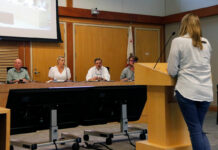For centuries, civilized peoples recognized the need for removal of bodily wastes from the human environment. Apart from the obvious odors and appearance of this waste, either on land or in bodies of water, the disease-causing germs were also present. Dysentery, Typhoid Fever, Cholera, and other public health issues were often found to be caused by the presence of bacteria and parasites in drinking water sources which were contaminated by wastewater. In areas where populations are concentrated, and where there is more wastewater to treat, communities construct wastewater collection systems that collect the wastewater and convey it to a treatment facility. The wastewater collection system typically consists of gravity-fed and pressurized underground piping which allows the unobstructed flow of wastewater to treatment facilities.
Once the wastewater reaches the treatment facility, it can go through several stages of treatment, depending on the sophistication of the plant and the regulatory requirements, and then the treated wastewater is disinfected. Here’s what each treatment stage does:
• The first step in treatment is, commonly known as the preliminary treatment stage, and is designed to remove large solids and grit from the incoming wastewater. This is done through the use of screens and settling channels. This separated solid material is then collected and combined with solids removed in later stages, then either reclaimed as compost or fertilizer, or in some cases sent to landfills.
• The next stage, commonly known as the primary treatment stage, acts as a settling tank, using either ponds or specially designed structures and equipment. It allows additional solids to settle out of the wastewater and the floatable solids to rise to the surface. Some systems collect the solids from the top and bottom portions of these tanks and collect them for reclamation, or remove them for disposal.
• The next stage, commonly known as the secondary biological treatment stage, uses bacteria and other microbes to remove organic waste and nutrients from the wastewater. Aerated ponds, tanks and special equipment create environments which enable these masses of microorganisms to reduce the concentrations of organic matter in the wastewater. When these microorganisms die, they need to be removed from the treatment process, allowing newer populations to thrive. Masses of solids from all treatment stages can be de-watered and become bio-solids, which can either be utilized for compost production, added directly to agricultural soils for nutrient amendment, or in some cases placed in landfills. The mass of solids can also be sent through a digestion process which produces useful methane gas.
• An additional stage, known as the tertiary treatment stage, can treat the wastewater to a level where it can be used for crop and landscape irrigation, toilet flushing and many industrial uses — this is called recycled water. In the Russian River Watershed, recycled water is used in many communities and it is also used as a source of water for energy production at the Geysers Geothermal Plant. Typically, tertiary treatment enables beneficial use of the recycled water. Recycled water is regulated by California State Water Code which prescribes how the water can be used. Tertiary treatment uses special processes or chemicals to remove nutrients such as phosphorous and nitrogen from the water, and may also include micro-filtration or other types of advanced equipment.
• Treated wastewater, whether secondary or tertiary, also undergoes a final stage — the disinfection stage. This stage has the job of removing, or de-activating, any remaining disease causing bacteria which could be present. Methods of disinfection can include the use of chemicals such as chlorine and sulfur dioxide. A more modern method uses Ultraviolet (UV) light, similar to that from the sun. Wastewater passes through piping or flow channels and is exposed to a concentrated form and wavelength of UV light. The wastewater, following disinfection, is now fully treated and subject to rigorous laboratory testing to ensure the proper completion of the above processes.
The treated and tested recycled water or reclaimed water is then either put to beneficial uses like irrigation, or during the winter may be discharged to receiving waters, typically a pond, river or larger body of water.
Al Ochoa is the Utility Operator for the City of Healdsburg. He wrote this commentqry on behalf of RRWA. RRWA (www.rrwatershed.org) is an association of local public agencies in the Russian River Watershed that have come together to coordinate regional programs for clean water, fisheries restoration, and watershed enhancement.








